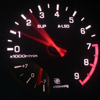Whats More Fuel Efficient?
Announcements
-
Similar Content
-
Latest Posts
-
I'd ask the shop what they used and use that. Mixing coolants is sometimes OK, sometimes not, and you have know the details of each coolant to know whether it's a good idea or not.
-
thanks GTSboy. My confusion at the moment is i am trying to locate the ignition, ECU battery power and the ECU negative The closest thing i can find is the for the S15 on Page 8 of the Wiring Specialties web page https://drive.google.com/file/d/0B9F33_M_GgENQnZ6STMxVmVNd1E/view?resourcekey=0-eZ4nNRwRoqa1qvKlWWHm8A I cannot find the same diagram for the R33 RB25DET Series 2 dash plug pin out.... Do you know what the Pins? or know where i can find the same pinout diagram for the RB dash plug? Thanks for the advice on the box... i like a 6 speed so might be on the lookout or the box now.. a topic of discussion for another post...
-
Put another overflow bottle (ie, a 1.25 coke bottle or similar) under the overflow hose and see if it is being pushed out there or if it is disappearing into the engine.
-




Recommended Posts
Create an account or sign in to comment
You need to be a member in order to leave a comment
Create an account
Sign up for a new account in our community. It's easy!
Register a new accountSign in
Already have an account? Sign in here.
Sign In Now